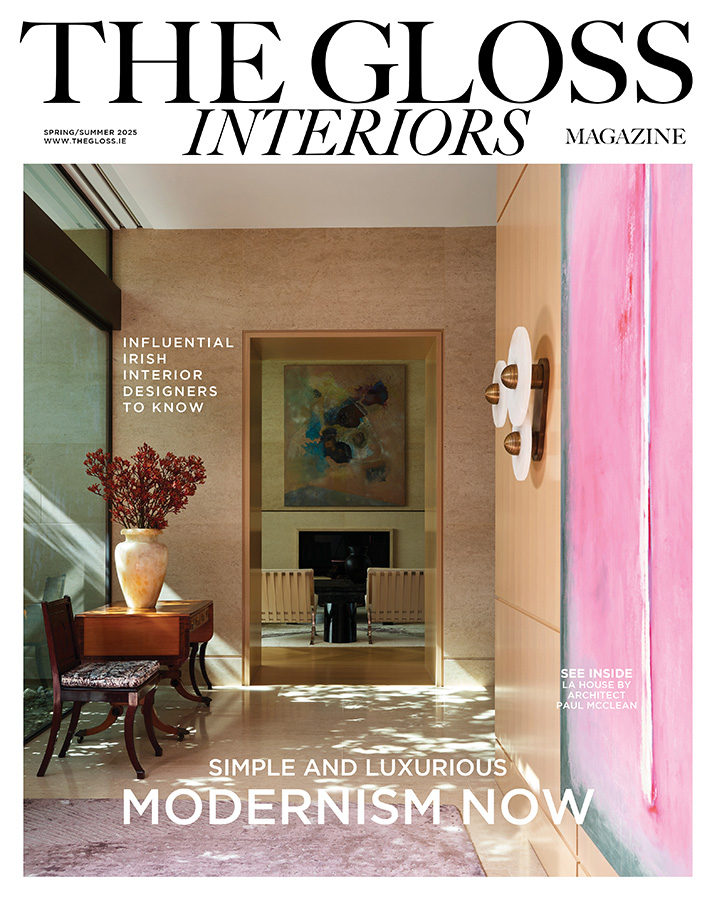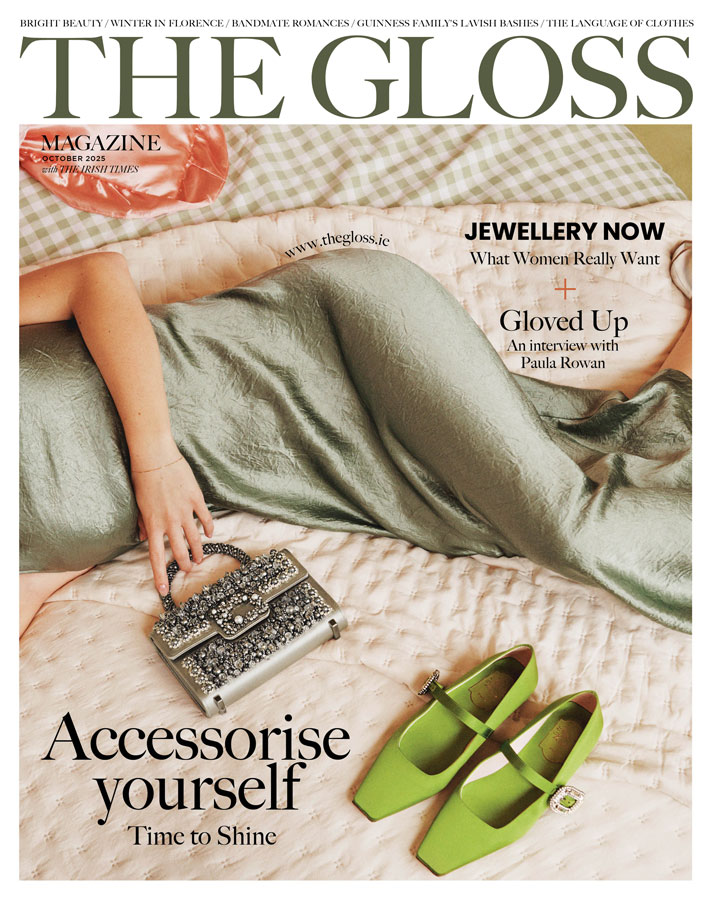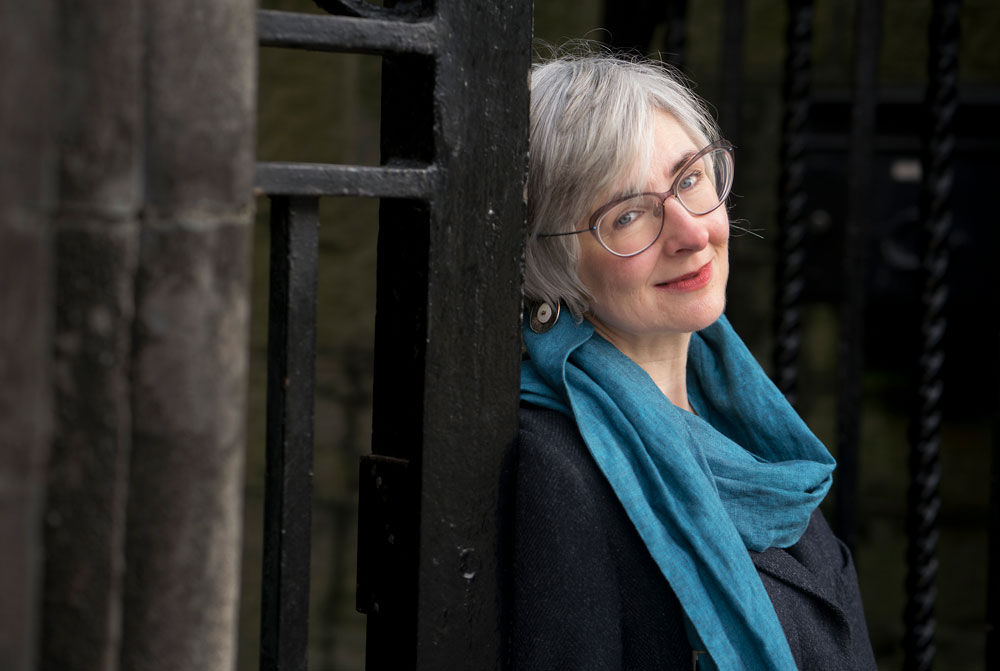SOPHIE GRENHAM talks to AMANDA BELL about JAPANESE POETRY FORMS, growing up in rural Limerick and the charm of INDEPENDENT BOOKSHOPS …
Amanda Bell is an award-winning poet, author, editor and writing mentor with many feathers in her cap.
Not only is Amanda a professional member of the Irish Writers Centre with a Masters in Poetry Studies, but she is an expert in traditional Japanese poetry forms. Her haibun collection Undercurrents (Alba Publishing, 2016) collected second prize in the Haiku Society of America’s Kanterman Merit Book Award, and was also short-listed for a Touchstone Distinguished Books Award by the Haiku Foundation.
She is the editor of Maurice Craig: Photographs (Lilliput, 2011) and The Lion Tamer Dreams of Office Work: An Anthology of Poetry by the Hibernian Writers (Alba Publishing, 2015).
In 2015 Amanda won the William Allingham Poetry Prize, was selected for Poetry Ireland’s Introductions Series in 2016 and has been commended twice for the Patrick Kavanagh Award. As well as a bard with many talents, Amanda is the author of children’s title The Lost Library Book (The Onslaught Press, 2017).
Amanda recently published her debut poetry collection, First the Feathers, a vibrant, vivid and beautifully constructed work of art. It was seven years in the making and clearly worth the wait. Amanda was nominated for the Listowel Writers’ Week Poem of the Year accolade at the Irish Book Awards 2017.
Amanda Bell lives in Dublin with her family. She currently has several new projects in the pipeline.
First the Feathers (€12) is published by Doire Press and available from most good bookshops.
On home
I live at the intersection of three urban villages: Rathmines, Rathgar, and Harold’s Cross. I work at home, and to clear my head I walk a circuit from the house, taking in a stretch of either the Grand Canal or the Dodder, so urban ecology is part of my everyday experience – from gulls to kingfishers, foxes to water rats. Between these linear parks we have a diverse array of architecture and shops. I love the verdigris dome of the church in Rathmines, the beautiful library and the town hall with its iconic clock, “the Four-faced Liar.” My go-to shop is The Hopsack, my favourite pub is Slattery’s, and for eating out either Kafka or Manifesto. One of my favourite pastimes is rummaging, and in spite of recent gentrification there are still treasure troves in the area: thrift shops, Herman & Wilkinson’s auction rooms, curio shops – my children’s book The Lost Library Book began with a find in Harold’s Bazaar on Harold’s Cross Road. Some recent genealogical research revealed that my family has been living (and dying and being buried) close to where we live since the mid-1800s, which may contribute to the strong sense of connection I feel here.
On rural life
When I was eight, we moved from Dublin to what was then a rural part of Limerick. I loved “helping out” on the farm behind our house – collecting eggs from hot little hidey holes between bales in the hay barn, feeding pigs on scraps collected from hotel kitchens, milking cows, grooming ponies. My parents grew their own fruit and veg (still do!), and I’d bring raspberries to my friends on the farm, to eat with cream scooped off the top of a churn in the byre. A lot of my memories are quite visceral: the Heaney-esque squirming of frogs and newts mating in the floodplains, the feel of moss-covered stone under my bare feet walking across a salmon weir, the sticky heat of a horse’s neck. And the dark. During the second oil crisis of 1979 there were frequent power-cuts, and my brother and I did our homework by the light of an old oil-lamp. Our local youth club was a mile or so from home along completely unlit roads – a type of darkness we are now unfamiliar with. I was reminded of it this winter when there was a power outage, and we suddenly became aware of the extraordinary moonlight.
On creating
I work in an upstairs, south-facing room at the front of the house. Our three cats, who are good judges of the best place to be, settle on an armchair by the window to bask in the sun. There’s an almond tree directly in my line of vision when I look up – the tree and its bird visitors recur in my haiku. We mounted a nesting box for swifts under the eaves a couple of years ago, and at the end of April play a CD of swift song out the window in an attempt to lure them to nest here – unsuccessfully, so far. The room is lined with books and files and boxes and whatever else is in transit around the house. There are drawings and self-portraits that my daughters did when they were little. The latest addition to the room is a Victorian clock gifted to my great-grandparents on their wedding day in 1893, which I recently had repaired. It has a lovely, gentle chime when I can find an even surface to place it on.
On bookshops
The charm of independent bookshops – particularly small ones – is how they reflect the personalities and interests of the management, and I admire anyone who can balance this against the necessity of remaining commercial. Rathgar Bookshop was a lovely space for readings and exhibitions as well as plant and book sales, and will be a sorry loss to the community when it closes its doors this year. Books@One in Louisburgh is a fascinating venture – a not-for-profit “destination bookshop” with a strong community outreach. I was lucky enough to read at their inaugural festival last summer and loved its eclectic selection of new and second-hand books, good coffee, comfortable chairs, lovely light, and use of movable displays. It is a real community hub with a commitment to social inclusion and rural regeneration; I look forward to seeing more of them rolled out around the country. Books Upstairs has the best selection of literary journals and poetry collections that I have seen anywhere, and I’ll always pick up something interesting and unexpected in Chapters. In Rathmines, Alan Hanna’s and Dubray are great supporters of local writers, and I have a fondness for O’Mahony’s in Limerick, where I worked for a few summers after secondary school.
On her nightstand
There’s quite a pile. I’m working on a paper about haibun at the moment, so there’s a lot of haibun-related material at the top of the heap, including Pilgrim Foxes – a pioneering collection by Jim Norton, Sean O’Connor and the late Ken Jones, and back issues of the Irish journal Haiku Spirit, which I hope to see revived some day. A lot of nature writing – J.A. Baker, Rachel Carson, Kathleen Jamie, Robert Macfarlane.
Some poetry – early Sharon Olds and recent work by Martina Evans, Ross Hattaway, Emma McKervey, and fellow Hibernian writers Brian Kirk and Maeve O’Sullivan. Humankind: Solidarity with Nonhuman People by Timothy Morton, which attempts to introduce ecology into Marxism. Motherfoclóir by Darach Ó Séaghda. Some Adrian Mole. Mireille Gansel’s Translation as Transhumance, which I found fascinating, as I recently translated Gabriel Rosenstock’s book-length sequence, Sasquatch. Beautifully illustrated children’s books to flick through – Nicola Davies’s Perfect, I Am a Child of Books by Oliver Jeffers and Sam Winston. Books about writing: Steve Heighton’s Workbook, a wise and beautifully produced resource for writers, and Elizabeth Gilbert’s Big Magic. I love middle-grade and YA fiction, and have just started on Susan Cooper’s The Dark is Rising.
On poetry
Reading poetry gives the possibility of connecting with another person’s inner world. It’s a potent reminder of the commonality of human experience, and a fascinating alchemy when you can utterly identify with someone’s poem, but may have no connection whatsoever with the poet in person. If you connect both with a poet’s work and on an individual level, that’s a special sort of friendship, but not by any means a given. The work and the poet are very separate phenomena.
For me, the experience of writing poetry is simply to explore what I feel and think. Because it’s more imagistic, writing poetry can get you to a point of understanding much more rapidly than essay writing. Yeats summed it up perfectly: “Out of the quarrel with others we make rhetoric; out of the quarrel with ourselves we make poetry.” I work things out by writing poems, many of which I will never submit for publication because they have served their purpose. However, if you work something out in a poem and a reader then gets a similar revelation through reading your work – or indeed a completely different revelation – that is magic.
On Japanese forms
I fumbled around with form for years, not sure whether I should be writing novels or short stories or plays. I even found diary writing fraught, feeling like Tristram Shandy trying to start at the very beginning, prior to my own conception. So eventually I settled on crystallising each day into one haiku. It’s a brilliant solution to concentrating your focus, and is a potent way of diarising, as it is both an incisive emotional barometer and an acutely observed nature journal. So initially I did it for my own sanity, then realized that it was publishable, and started submitting to journals. When I first encountered haibun it was a revelation – this was exactly the form I had been waiting for, and I’m only at the beginning of exploring the possibilities it presents. I’m researching the history of the form at the moment, from its roots in 17th century Japan via the Beat poets to its current position in Ireland. I’m delighted to be part of the recently-formed Pepperpot Haibun Group, and looking forward to seeing the form gain greater traction in the wider poetry-world.
On mentoring
It’s always a privilege to be involved in someone else’s creative process, and I particularly enjoy working with poets. Some clients want help with structuring a collection and others are looking for a more substantive, line-by-line critique. With poetry, the most important role is to be a sounding board – a way of double-checking “is this what you are trying to say and the optimum way for you to express it?”
People have widely varying motives for writing, and I’ve been very impressed with the poetry I’ve worked on recently. Poets tend to want to polish their work to the best possible finish, so it’s very much a dialogue. Fiction writers can be vague about their requirements, focusing more on a desired outcome than on the nitty-gritty of the work, and often expect to hand over a first draft and rely on someone else to transform it into a bestseller, rather than go through the hard graft of multiple drafts with a writing group. A lot of people have difficulty grasping the difference between a structural edit, copyedit, and proofreading. Luckily the AFEPI has a good website with guidelines that you can refer them to.
On what’s next
I’ve had the extraordinary good fortune to be invited to Kerala Literary Festival in February, with a group of Irish writers, including Gabriel Rosenstock, whose books on haiku I have found to be an invaluable resource.
One of my daughters is doing the Leaving Cert this June, which is a good reason to plan on a less frenetic pace of life this year. Having had three books published in eighteen months – four in two years, if you include an anthology I edited at the end of 2015 – I would like to settle into a more contemplative mode, combined with readings to promote First the Feathers and some workshops for children based on The Lost Library Book. I find that the best way to write poetry in any form is to open up an entirely different creative channel, like gardening, and wait for the poetry to come in to the space that you’ve cleared in your psyche.
I recently completed an eco-novel for young people, and I plan on revisiting that with a view to a final edit and finding an agent and/or publisher.
Other than that, I have been stopping and starting with improving my Irish, and plan to engage with that more formally later in the year.
Love THEGLOSS.ie? Sign up to our MAILING LIST now for a roundup of the latest fashion, beauty, interiors and entertaining news from THE GLOSS MAGAZINE’s daily dispatches.





